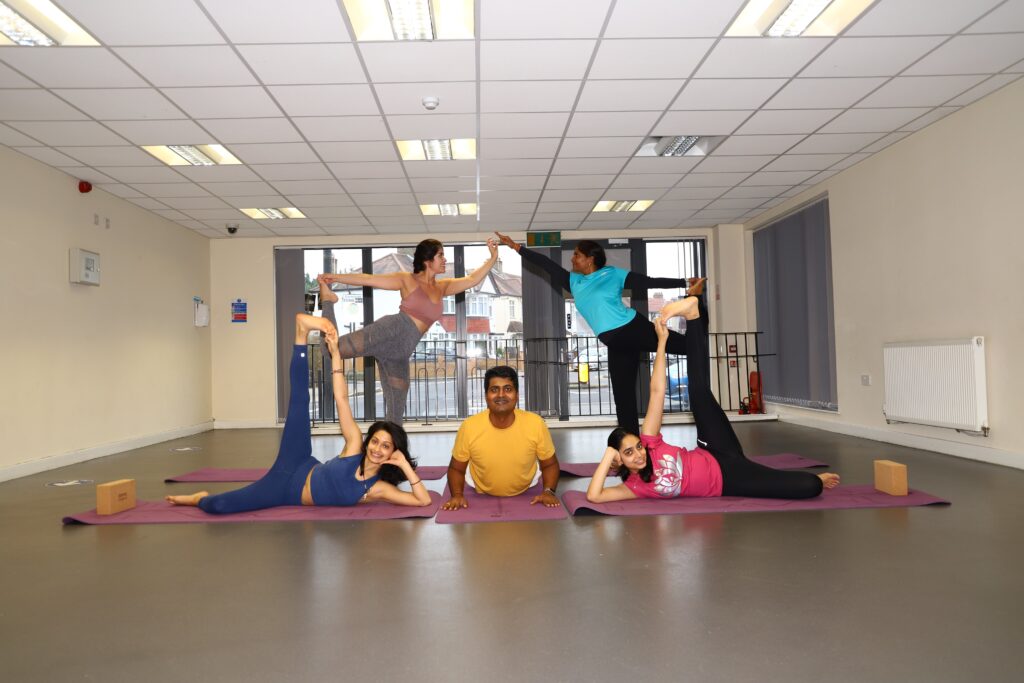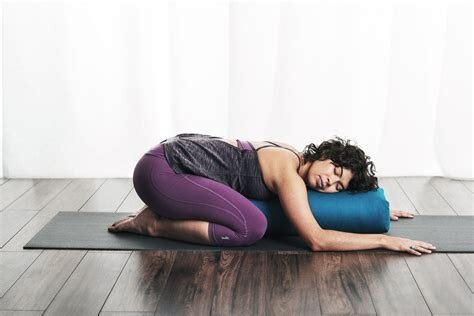Although yoga has been around for over 5,000 years, and was actually introduced in The United States in 1893, it was the hippie and new age movements of the 1960’s that really popularised the physical aspects of yoga. Then in the 80’s and 90’s, the fitness craze and VHS tapes made yoga even more popular. Now, tens of millions of people practice yoga in probably just as many yoga studios across the U.K.
As yoga became more popular in the west, a variety of styles of yoga were created to meet different needs of the students. Now yoga studios and teachers differentiate themselves by styles of yoga all across the U.K. Unfortunately, all these different options can be very confusing for beginners! Today I’m going to share the main types of yoga styles and who might benefit from each so that you can choose the right style for you and get the most out of your yoga practice!
The Main Styles of Yoga
Although each style of yoga has different approaches and techniques, they all work toward the same goal of finding harmony with yourself and your environment. It’s important to remember that there is no one “right” style or “wrong” style for you – you want to choose based on how you are feeling at any given moment. When I need more energy, I turn to a vinyasa-based class. When I need to calm and relax, I find myself attending more restorative classes. Before choosing, get quiet enough to listen to what your mind and body need – they always know best!
HATHA YOGA
The most popular style of yoga in the West is “Hatha Yoga”, which uses postures, breathing and meditation techniques to create balance and harmony in your life. The postures are designed to tone, strengthen and align the body and although they are consistent in each style, the approach to each posture can vary. The breath is directly tied to the energy in the body and acts as the bridge between the mind, body and spirit. Finally, meditation employs techniques to work towards clarity and stillness of mind. Together these three aspects of Hatha yoga help us practice being more alive and present to our experiences.
Many styles of yoga actually use all three of these aspects but just in different ways. Therefore, Hatha Yoga is a blanket term for many of the yoga styles that use the body as the main focus of concentration. So, other types of yoga – Iyengar, Bikram, Vinyasa, Kripalu, etc. – are considered Hatha Yoga as well.

ASHTANGA YOGA
Ashtanga is a Sanskrit word that translates to “Eight Limb Path”. Ashtanga was first used by the ancient Indian sage Patanjali who wrote The Yoga Sutras, a practical textbook designed to guide someone on their spiritual journey. According to Patanjali, the eight limbs should be mastered in order to find balance and harmony in your life. Ashtanga Yoga is the practice of these limbs to help you reach the true goal of yoga.
This style is made up of six series of specific postures taught in order. You can practice this style in a “teacher led” setting where the first or second series are taught over a period of time. Or, you can practice it in Mysore-style, where you are only given the next posture when your teacher decides that you have mastered the previous one. Here you memorize the series and are encouraged to move at the pace of your own breath, working toward your own personal edge.
Ashtanga is a very physical, flow-style of yoga. If you prefer routine and a more physical practice, this style might best suit you.
VINYASA YOGA
The word “Vinyasa” translates to mean, “place in a special way” and can also be called “flow yoga” or “vinyasa flow”. This type of yoga is when movement and breath are linked together in a rhythmic, continuous flow. It was adapted from Ashtanga yoga in the 1980s and is considered an athletic style of yoga. That, however, does not mean it is only for advanced practitioners. If a beginner is looking for a challenge, Vinyasa would be the perfect place to start. The flow is very meditative and even though you are moving, usually one breath per movement, the mind and nervous system become calm. If you like to move, this style is for you.
POWER YOGA
Power Yoga is a type of Vinyasa Yoga because the focus is on one breath per moment. It also stems from Ashtanga, but is less regimented. The difference is that Power Yoga is a very athletic style of yoga and could be considered a fitness-based vinyasa practice. Teachers create their own sequences designed to build internal heat, increase stamina, strength and flexibility all while reducing stress. It is fast paced and it can be taught in a heated room or not. More familiar types of Power Yoga include Baptiste Power Yoga, Core Power Yoga or people refer to it as “hot yoga” as well.
BIKRAM YOGA
Bikram Yoga was created by Bikram Choudhury and is a routine-based Hot Power Yoga class. Classes consist of a set series of poses (26 to be exact and 2 breathing exercises), performed in the same order. The room must be 105 degrees Fahrenheit with 40% humidity. The instructors can not adjust students and the classes are always 90 minutes. The idea is that the sequence of posture along with the heat and humidity combo help to clear out the toxins in your body and allow you to go deeper into the postures. This type of yoga is definitely for anyone who enjoys a good sweat and routine.
IYENGAR YOGA
B.K.S Iyengar developed Iyengar Yoga in the 1960s and brought it to the US in the 1970s. Iyengar Yoga is a meticulous style of yoga where the emphasis is on precision and alignment. It is a more static form of yoga, and a variety of props can be used to help students find more accurate alignment. Iyengar teachers are required to complete high levels of training. If you have physical limitations or enjoy detailed instruction, Iyengar Yoga is for you!
KUNDALINI YOGA
The word “Kundalini” translates to mean, “life force energy” which is thought to be coiled at the base of the spine. It was developed by Yogi Bhajan and brought to the West in the late 60s. The combination of breath, movement and sounds are designed to unlock this energy and move it up the spine through the seven chakras (or energy centers) and eventually out the crown of the head. These classes can be pretty intense because they work your core and include fast, invigorating postures and breath exercises. The idea is to elevate your consciousness and rid yourself of negative energy. You will see practitioners wearing all white, which is said to deflect negativity and increase your personal aura. If you are in search of a physical and spiritual practice, or just really enjoy chanting and singing, this style of yoga is for you.
KRIPALU YOGA
Kripalu Yoga was founded by Amrit Desai in the 1980s, who named it after his teacher, Sri Kripalvananda (Or Swami Kripalu to those that practice at the Kripalu Center in Stockbridge MA). It is a Hatha based style of yoga based in compassion. Its gentle style encourages you to move at your own pace and accept yourself for exactly where you are at any given moment. And, it encourages you to adapt your practice (and your life) based on what you need today. Kripalu Yoga believes that your body is your best teacher, so the poses are held long enough for you to tune in and explore what you feel. This style of yoga is perfect for those going through a significant change or transformation in their life or who have physical limitations.
YIN YOGA
Yin Yoga is a slower style of yoga where the poses are held for longer periods of time (from one to five minutes, or longer). It is designed to increase circulation in the joints and to stimulate a particular area of the body (e.g., hips, hamstrings, shoulders, etc.). The types of yoga described above focus on the major muscle groups in the body while Yin Yoga focuses on the body’s connective tissue. The deep stretches can help aid in recovery from difficult workouts and the long holds also help to quiet the mind and calm the nervous system.
RESTORATIVE YOGA
Similar to Yin Yoga, restorative yoga postures are held for long periods of time (sometimes five or more minutes). However, the goal of restorative yoga is to completely relax. Props are used to fully support and ground your body in order to enhance the parasympathetic nervous system and completely de-stress. It’s a great way to rest, both physically and mentally. It can also be used to help ease physical pain. This type of yoga is more about “being” rather than “doing.”

This list is just a summary of the main styles of yoga you’ll find in different yoga studios. Even though I could go into much more detail of each style, this list is just a taste of each so you have an overall idea of what to expect from each style. And then, based on your own needs and life experiences, hopefully this list helps you choose the style that’s right for you at any given moment. And if you are new to yoga, or simply want to start a home-practice, check out our

